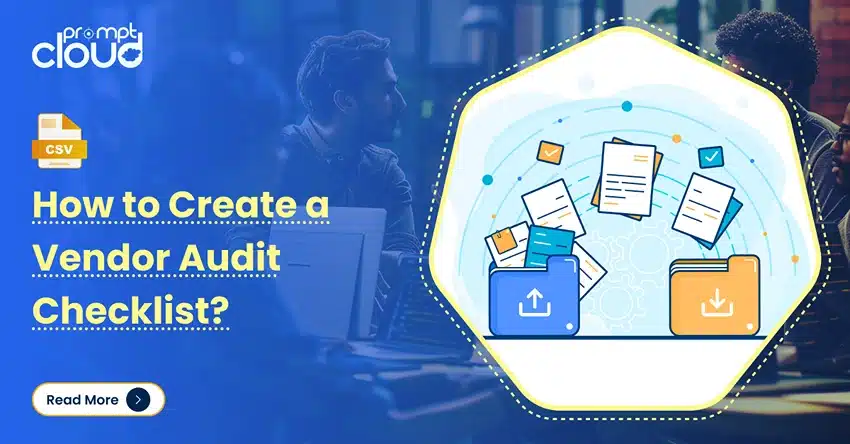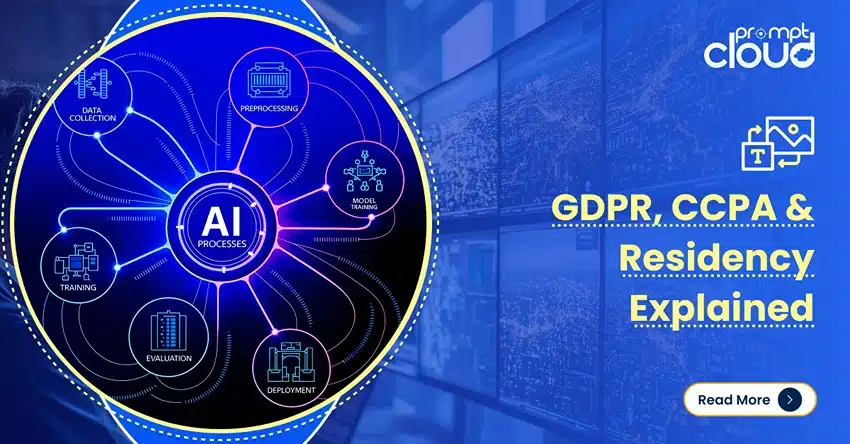**TL;DR** Winning on Google Shopping isn’t just about showing up. It’s about showing up better, with product feeds so tight and prices so competitive that you leave competitors choking on your dust. In 2025, “set it and forget it” is suicide. Google’s new price alert feature means shoppers now get pinged when your competitors drop their prices. If you’re not watching the market in real time and adjusting fast, you’re gifting sales to someone else.
Feed optimization is your first weapon. Nail your titles. Sharpen your descriptions. Feed Google crisp, high-res images and bulletproof product data so you rank where it matters — in front of buyers ready to click buy now.
Your second weapon? Relentless, real-time price tracking. Forget clicking through competitor listings manually, you’ll be dead before you finish page two. Automated web scraping solutions (like PromptCloud’s) scan Google Shopping constantly, pulling competitor prices, stock status, and promotions into your dashboard. The moment someone undercuts you, you know. And you move.
Combine a perfectly tuned feed with ruthless Google Shopping monitoring, and you’re not just competing, you’re dominating. This is how you crush rivals, win the click, own the sale, and keep your margins intact.
Why Google Shopping is a Game-Changer for E-commerce
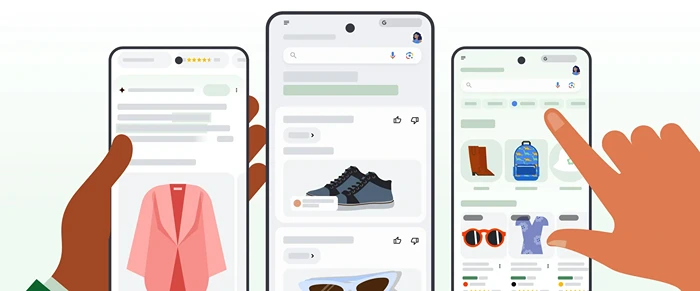
Image Source: Google Blog
Let’s be blunt: if you’re not winning on Google Shopping, you’re handing your sales to someone else. This isn’t some nice-to-have side channel anymore; it’s the front door to millions of ready-to-buy customers. Google Shopping listings sit right at the top of search results, screaming for attention with product images, prices, and reviews before organic listings even get a glance.
And shoppers? They love it. A Merkle Digital Marketing report showed Google Shopping ads account for over 65% of all Google Ads clicks for retailers. Translation: More than half your potential buyers are skipping text ads and going straight to product listings. That’s because Google Shopping doesn’t just show ads, it shows a price war in real time. Lowest price, cleanest listing, fastest click.
Now add Google’s price alert feature to the mix. Shoppers can follow products they’re interested in, and the moment another seller slashes the price, Google pings them. It’s basically handing them a VIP pass to watch your pricing war unfold in real time. If you’re not tracking competitors and reacting instantly, you’re the one triggering those alerts — and sending customers straight into a rival’s cart.
Here’s the brutal reality:
- Visibility matters — if your product feed isn’t optimized, you won’t even show up where it counts.
- Price matters more — even the prettiest listing dies if a competitor beats you by $2.
- Speed kills — slow reactions to market changes mean lost sales you’ll never get back.
Google Shopping is no longer a static catalog. It’s a living, breathing, cutthroat marketplace. The brands that thrive here are the ones that master two things: feed optimization and real-time competitor price tracking. Get them both right, and you’re not just part of the race — you’re setting the pace.
What is Google Shopping and How Does it Work?
Before we start mapping out exactly how to win, let’s get on the same page. Google Shopping plays by its own rules — it’s not like Amazon or eBay, where you log in, search for something, and check out on the same platform. It’s a product discovery engine baked into Google Search itself, pulling in product data from thousands of retailers and putting them head-to-head right in front of the shopper.
Image Source: Google
Here’s the crash course:
You, the retailer, create a product feed — basically a detailed spreadsheet of every item you sell — and upload it to Google Merchant Center. That feed holds all the vital stats Google needs to display your products: titles, descriptions, images, prices, stock status, brand, SKU… the works.
When someone searches for a product, Google compares their query against every feed it has, then serves up the most relevant matches in the Shopping tab (and often right at the top of search results). Each listing shows:
- Product image (make it count — it’s the shopper’s first impression)
- Price (the deal-breaker for many clicks)
- Retailer name
- Reviews/ratings
- Shipping info (if available)
The catch? Google doesn’t just rank you because you paid for ads. It also considers how complete and accurate your feed is, how competitive your pricing is, and how relevant your listing is to the search term. In other words, sloppiness in your feed or a pricing strategy stuck in last year’s spreadsheet will bury you faster than you think.
And here’s where it gets interesting: your competitors are right there, side-by-side with you. The shopper isn’t scrolling pages to find you. They’re glancing at you vs. them in seconds — who looks better, who’s cheaper, who they trust more. That’s why Google Shopping monitoring and smart pricing adjustments are just as critical as your product images and keywords.
Think of Google Shopping as the ultimate price-and-product beauty contest. The judges? Impatient shoppers armed with instant comparisons. Feed optimization gets you on the stage. Real-time price tracking keeps you from getting voted off.
How to Optimize Your Google Shopping Feed for Maximum Visibility
If your product feed is sloppy, outdated, or missing key details, Google will treat it like junk mail — tossed aside before anyone even sees it. Feed optimization isn’t “extra credit.” It’s the foundation for ranking high, getting clicks, and winning sales. Here’s how to get your feed in fighting shape.
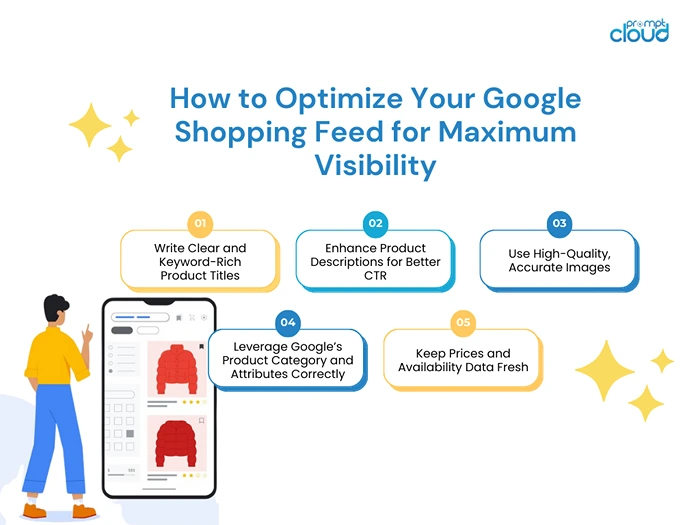
Write Clear and Keyword-Rich Product Titles
Your product title is prime real estate. Your product title is more than a label — it’s the first thing Google and your potential customer read. Keep it straightforward but packed with the right details. Work your main keywords in without making it sound forced. So instead of something bland like “Running Shoes,” you might go with “Men’s Lightweight Running Shoes – Nike Air Zoom Pegasus 39.” In just a few words, you’ve told them the brand, the type of product, and the key selling points. Google rewards relevance, and shoppers reward clarity.
Enhance Product Descriptions for Better CTR
A good description does two things: it gives Google the data it needs to match your product to a search, and it persuades the shopper to click. Ditch the fluff and make it about the shopper’s gain, not just the features. You can still drop in terms like “Google shopping price monitoring” or “how to rank in Google Shopping”—just do it so it flows with the rest of the sentence. If it reads like a real person wrote it, you’ll get more clicks.
Use High-Quality, Accurate Images
In Google Shopping, your image is your handshake. Blurry? Crooked? Stock-y? That’s a bounce. Shoot crisp photos, neutral backgrounds, natural light, and—when it helps—lifestyle pics that tell the story. Be literal about variants: color, finish, size. Showing one thing and shipping another is the fastest way to lose a customer for good.
Leverage Google’s Product Category and Attributes Correctly
Google’s category system isn’t just bureaucracy — it’s a ranking factor. Assign your product to the most precise category possible. Then fill out every relevant attribute: color, size, material, brand, gender, and so on. This helps Google match your product to long-tail searches where the buyer intent is sky-high. Skipping this is like leaving money on the table.
Keep Prices and Availability Data Fresh
Few things are more damaging than showing up in Google Shopping with an out-of-date price or an “in-stock” flag for something that’s sold out. Not only will you lose the sale, but Google might penalize you in rankings for unreliable data. Sync your product feed updates with your inventory and pricing changes in real time. This is also where Google Shopping monitoring pays off — keeping your data in lockstep with market shifts.
When you nail these fundamentals, you don’t just get listed, you get noticed. And once you’re noticed, you’re halfway to winning the sale. The other half? Knowing exactly where your competitors stand, every second of the day.
The Rising Importance of Competitor Price Tracking on Google Shopping
Here’s the cold truth: on Google Shopping, you’re standing shoulder-to-shoulder with your competitors in full view of your customers. This isn’t like SEO, where someone has to scroll to find your rivals; here, they’re right there, lined up next to you, price tags flashing. One wrong move, one sloppy pricing gap, and the shopper’s gone before you can blink.
Price isn’t everything, but it’s dangerously close. A Statista survey found that over 60% of online shoppers compare prices before making a purchase, and with Google’s shiny new price alert feature, that number might as well be 100%. Now, customers don’t even have to check back — Google tells them when someone else drops the price. Guess whose sale that alert just stole?
This is where too many retailers lose the plot. They treat pricing like a quarterly review instead of a living, breathing battlefield. Your competitors are adjusting daily, sometimes hourly, and if you’re not watching the board, you’re playing blindfolded. Worse, you might be the one triggering the alerts — unintentionally sending your hard-won traffic straight to the bargain bin down the road.
Here’s what makes Google Shopping monitoring so critical:
- Speed decides the winner — if a rival undercuts you and you don’t see it for a week, that’s a week of lost conversions you’ll never get back.
- Perceived value shifts instantly — even a small drop from a competitor can make your higher price look unjustifiable, no matter how good your product is.
- Market intelligence is power — knowing not just who’s cheaper, but by how much, and how often they change prices, gives you the ammo to plan your counterattack.
Competitor price tracking isn’t just a nice data point anymore — it’s the oxygen your Google Shopping strategy breathes. Without it, you’re not competing. You’re guessing. And in a market this brutal, guesswork is a death sentence.
How to Monitor Competitor Prices in Real Time
Manually checking competitor prices is a joke. You’ll burn hours clicking through listings, jotting numbers in a spreadsheet, and still miss half the market moves. By the time you’ve finished page three, your data is already stale. In Google Shopping’s world, where pricing shifts can happen multiple times a day, manual tracking isn’t just inefficient — it’s a guaranteed way to lose.
So how do you keep up without losing your mind? You automate it.
Manual Monitoring vs. Automated Tools
If you’re still wondering why automated Google Shopping monitoring beats doing it yourself, here’s the blunt breakdown:
| Feature | Manual Monitoring | Automated Tools |
| Coverage | Limited to what a person can check in a given time; misses many listings | Covers hundreds or thousands of SKUs across multiple competitors |
| Speed | Slow: hours or days to collect full data | Near-instant data collection and updates |
| Accuracy | Prone to inconsistencies and missed details | Consistent, precise, and repeatable results |
| Scalability | Cannot handle more than a small product list effectively | Easily scales to track large product catalogs |
| Cost Efficiency | High labor cost for large-scale tracking | Lower ongoing cost once set up, huge time savings |
| Response Time | Delayed – competitors can change prices before action is taken | Immediate alerts for instant response |
| Data Freshness | Quickly outdated – data becomes stale within hours | Continuously updated for real-time accuracy |
| Human Error Risk | High: fatigue and oversight cause mistakes | Low: systems follow exact parameters with no fatigue |
Manual monitoring might seem “cheap” at first glance, but the second you try to scale, it bleeds money, time, and opportunities. Automated tools don’t just save you effort — they give you a tactical advantage that manual methods can’t even touch.
Using Web Scraping Solutions for Price Intelligence
This is where web scraping solutions become your secret weapon. Instead of hiring a small army to watch your competitors, you deploy tech that scans Google Shopping listings, pulls every relevant data point — price, stock status, seller name, discounts — and feeds it into a central dashboard. Tools like PromptCloud’s Google Shopping monitoring can track hundreds (even thousands) of SKUs across multiple competitors without breaking a sweat.
The magic isn’t just in gathering data — it’s in how fast you get it. Price drops, flash sales, even sneaky coupon-based undercutting — you see it as it happens. That’s real-time price intelligence you can actually act on.
Setting Up Google Shopping Monitoring Workflows
Real-time tracking isn’t just “flip a switch and walk away.” You need a workflow that turns raw data into action:
- Define your battlefield — list the products and competitors that actually move the needle for your sales.
- Set alert thresholds — maybe you care about a $1 difference, maybe it’s $10. Decide what triggers action.
- Decide your response times — are you matching instantly, or holding position until margins make sense?
- Integrate with pricing systems — the smartest setups tie competitor data straight into dynamic pricing engines, so adjustments happen automatically.
This isn’t about collecting more data for the sake of it. It’s about weaponizing that data so you can strike faster, smarter, and with precision. Because in Google Shopping, the only thing worse than being overpriced… is being overpriced and not knowing it.
Turning Price Insights into Strategic Advantage
Collecting competitor price data is only half the game. The real win comes from knowing exactly what to do with it — and moving faster than the other guy. Price intelligence without action is just another dusty report in your inbox. In Google Shopping, speed and strategy turn raw numbers into revenue.
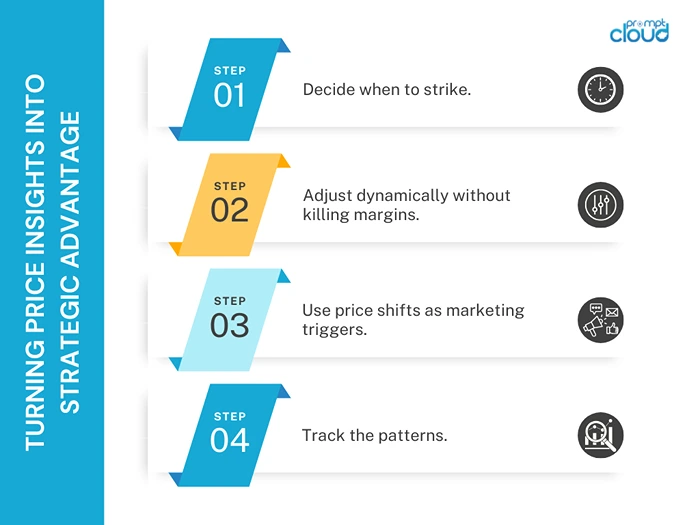
Step one: Decide when to strike.
Not every price drop deserves a knee-jerk reaction. Sometimes holding your ground makes more sense than racing to the bottom. Your monitoring tool should tell you who dropped the price, by how much, and for how long. If it’s a small player moving units at a loss, let them bleed. If it’s a big competitor with a loyal following undercutting your best-seller, that’s a different story — that’s war.
Step two: Adjust dynamically without killing margins.
With Google Shopping price monitoring feeding them fresh data, dynamic pricing tools can adjust your numbers on the fly, matching or beating rivals when it counts. The key is knowing where to pull the trigger: focus on high-traffic winners, bundle slow sellers with strong ones, and steer clear of blanket discounts that drain your margins.
Step three: Use price shifts as marketing triggers.
Spot a competitor raising their price? That’s your cue to push ads on that SKU hard. See a market-wide dip? Pair your price drop with a “limited-time” campaign to drive urgency. Pricing intel doesn’t just keep you competitive — it fuels smarter promotions that hit at the perfect moment.
Step four: Track the patterns.
Long-term monitoring uncovers competitor habits. Maybe one retailer always discounts on Fridays. Maybe another spike in prices after they run low on stock. Spotting these rhythms lets you position your offers for maximum impact, like sliding in with a lower price exactly when their shoppers are most frustrated.
Price data isn’t just about playing defense. Used right, it’s an offensive weapon. It lets you dictate the pace of the market, force competitors to react to you, and turn Google Shopping into a steady stream of profitable clicks instead of a daily scramble.
Common Mistakes to Avoid When Optimizing Google Shopping Feeds
Even the smartest e-commerce teams blow their Google Shopping strategy by tripping over the same avoidable mistakes. The platform is ruthless — one bad move can sink your visibility, your click-through rate, and your conversions. Here’s what to steer clear of.
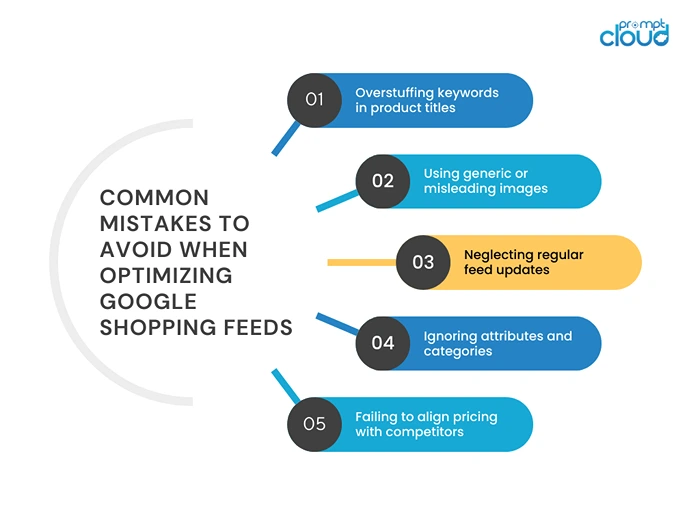
1. Overstuffing keywords in product titles
We get it — you want to rank for everything. But cramming “cheap,” “discount,” “best,” “sale,” and every possible product variation into your title doesn’t make you relevant; it makes you spammy. Google’s algorithm isn’t fooled, and customers can smell desperation. Keep your titles clean, clear, and accurate, with natural keyword use.
2. Using generic or misleading images
Shoppers see your image before they ever read a word, so make it count. If it’s a bland stock photo or doesn’t match what you’re selling, expect people to bounce and refunds to rise. Always go for high-quality photos that show exactly what the customer will unpack.
3. Neglecting regular feed updates
An outdated feed is a ranking killer. Show the wrong price or claim something’s in stock when it’s not, and Google will push your listing down while customers lose patience. Make feed updates part of your daily routine—or automate them—so your data always matches what’s actually on hand and how much it costs.
4. Ignoring attributes and categories
Leave out details like size, color, or material, and you’re cutting yourself off from long-tail searches where people are ready to buy. Even worse, put your product in the wrong category and it might not show up in the right results at all.
5. Failing to align pricing with competitors
Even if your feed is flawless, you’ll still lose clicks if you’re consistently overpriced. Without Google Shopping monitoring, you’re flying blind. Competitors can undercut you for weeks before you even notice — and by then, those shoppers are gone for good.
Avoid these mistakes, and you’re already ahead of half the competition. But if you combine flawless feed management with sharp pricing intelligence, you’re not just ahead — you’re untouchable.
Future Trends: Google Shopping Price Monitoring and AI
Things move fast on Google Shopping, and the brands that will lead in the future are already adapting. Real-time price tracking is powerful, but AI is set to turn it into something even bigger—forecasting changes before they hit.
AI-Powered Feed Optimization
Until now, getting your feed right meant manually tweaking titles, rewriting descriptions, and testing images to see what sticks. AI skips the trial-and-error. It can sift through your conversion data, watch competitor trends, and factor in seasonal shifts to automatically craft stronger titles, pick better images, and suggest prices that bring in more buyers.
Predictive Price Intelligence
Rather than simply flagging a price drop after it happens, AI can spot the signs that one’s coming. It studies past trends, stock patterns, and promotional cycles to forecast the move, giving you a chance to adjust before your competitor does. That’s the edge between keeping up and taking control.
Dynamic Pricing That’s Actually Smart
Dynamic pricing isn’t new, but most systems still operate on blunt rules — “match competitor price” or “stay $1 cheaper.” AI pricing engines will go deeper, weighing competitor moves against your margins, customer loyalty data, and even the likelihood of winning the sale at different price points. It’s precision pricing on autopilot.
Integrated Cross-Platform Monitoring
Shoppers aren’t just on Google Shopping — they’re on Amazon, Walmart, niche marketplaces, and even social commerce platforms. The future is unified monitoring, where your price intelligence spans every major platform and your strategy updates across all of them in real time.
Voice and Visual Search Optimization
As voice and image-based search grow, Google Shopping feeds will need to adapt. AI can already detect which visual elements (color, angle, background) make a product more “voice-search-friendly” or more likely to surface in image-based results.
Bottom line? In the next few years, Google Shopping monitoring will shift from a reactive survival tactic to a proactive growth engine. The brands that invest in AI-powered price and feed intelligence now will own the top spots — and the lion’s share of clicks — when everyone else is still scrambling to catch up.
Combining Feed Optimization with Real-Time Price Tracking
Google Shopping isn’t a place where you can coast. It’s a full-contact sport where your feed is your armor and your pricing strategy is your weapon. One without the other? You’re going into battle half-dressed.
Optimizing your feed — titles, descriptions, images, categories, and attributes — gets you in the game. It’s what puts your products in front of the right people at the right time. But that’s just visibility. To stay there, you need to defend your ground with real-time competitor price tracking. Without it, you’re a sitting duck, getting undercut and outmaneuvered without even knowing it.
The brands that dominate Google Shopping aren’t the ones that do one of these well. They’re the ones who do both flawlessly and continuously:
- Feed optimization keeps you visible.
- Price monitoring keeps you competitive.
- Acting on both keeps you profitable.
And here’s the kicker — this isn’t a “set and forget” game. Google changes. Competitors adapt. Shoppers shift. The brands that win treat this like a living, ongoing operation—run by automation, driven by solid data, and shaped by a strategy that shifts as quickly as the market does.
If you’re still relying on manual checks, irregular feed updates, and the occasional price review, you’re already giving up both revenue and market share. Invest in the tools, lock in the processes, and start making Google Shopping work for you instead of against you.
Because in this arena, you don’t get points for showing up. You get paid for winning.
Ready to take control of your Google Shopping strategy? Let PromptCloud’s web scraping solutions give you the real-time intelligence you need to optimize your feed, track competitor prices, and own the top spots. Talk to our team today and start winning!
FAQs
1. What’s the best way to rank higher in Google Shopping?
You win by showing Google exactly what it wants to see — and showing shoppers exactly what they want to buy. That means sharp, keyword-rich titles that make sense to a human, crystal-clear images, full product attributes, and prices that don’t make people click away. If your feed is a mess or your pricing is out of whack, you’re invisible. Get those right, and you move up. Simple as that.
2. How often should I update my Google Shopping feed?
Every day — bare minimum. If your stock changes or you run promos, those updates should hit Google fast. Nothing kills trust like someone clicking “buy” on an in-stock deal that turns out to be sold out. Better yet, set up automation so the second your inventory or prices change, your feed updates without you lifting a finger.
3. Can I track competitor prices without using automation?
Sure, if you’ve got hours to burn and you like falling behind. Manual checks work for a handful of products, but the second you’ve got dozens or hundreds, you’ll miss changes and lose sales. Automation means you see the price drops the moment they happen — and you can hit back before the shopper’s gone.
4. What are Google Shopping price alerts, and why should I care?
Think of price alerts as Google handing your customers a cheat sheet. They tag a product they want, and if a competitor cuts the price, they get a “Hey, it’s cheaper over here” ping. If you’re not watching the market, you might be the one handing over sales without even knowing it.
5. How do web scraping solutions help with Google Shopping monitoring?
Think of it as hiring a tireless scout who never sleeps. Web scraping tools sweep Google Shopping, pulling live data on prices, stock levels, seller names, and promotions. You get the whole picture — who’s undercutting you, who’s out of stock, who just launched a sale — without lifting a finger. That’s the kind of intel you can actually act on before your competitors know what hit them.










